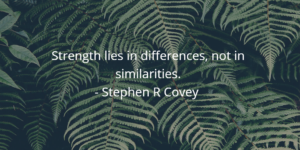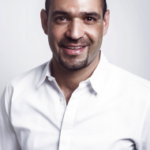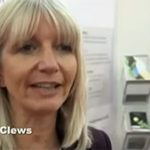Why thought diversity matters
07-09-2015: by Letticia Mincham, Certified TetraMap Facilitator
What does diversity mean to you? Where we ask this question dramatically impacts the responses received: in some organisations we might discuss skills, experience, hierarchy, or roles; in another gender, culture, department, or consumer input. In a health, setting answers could include culture, socio-economic demographic, or lived experience. Each industry will have its own perspective on what is important and when diversity is needed to create a future strategy or to manage current projects.
So why does it matter? We create multi-disciplinary teams to safeguard a business decision or ensure a successful project, using our understanding of diversity. We pride ourselves on including different points of view when we facilitate a discussion; however what is often overlooked when considering diversity is that this point of view comes from our individual diversity or working style. We bring different perspectives not just through our roles, skills, experience, or physiological criteria but also in personal preference and priorities: the way we look at the world – our ‘thought diversity’.
This type of diversity is not easily visible and yet is essential to broaden our thinking and bring true perspective to any discussion. A Deloitte study published in July 2013 explored thought diversity as a powerful tool with many benefits including:
- Helping guard against groupthink and expert overconfidence
- Increasing the scale of new insights
- Helping organisations identify the right employees who can best tackle their most pressing problems
Diversity, in this context, isn’t a form of political correctness, but an insurance policy against internally generated blindness that leaves institutions exposed and out of touch.
M Heffernan (2011)
In TetraMap
 The relatively new term ‘thought diversity’ is just another way to describe something that individuals intuitively know and that TetraMap® has harnessed and used to support countless organisations and individuals to understand over the years. Through this learning model, we can learn to recognise and embrace thought diversity and value the differences and potential of our teams and people.
The relatively new term ‘thought diversity’ is just another way to describe something that individuals intuitively know and that TetraMap® has harnessed and used to support countless organisations and individuals to understand over the years. Through this learning model, we can learn to recognise and embrace thought diversity and value the differences and potential of our teams and people.
The goal is to create a culture where people with different behavioral preferences are able to present their views and ideas with an equal voice.
We can use this knowledge to ‘stack the deck’ by ensuring all behavioral preferences are present within the team, or through the use of strategies to enhance thought diversity should there be a gap within the team dynamic. Thought diversity is essential at both the planning and implementation phases of any project and in the everyday work setting. How it is manifested will depend on various factors within the team and organisational make-up.
A quick checklist
- Are they goal-oriented or decisive?
- Will they keep on track?
- Do they appreciate the details and implications of an action?
- Do they understand the systems and processes within the organisation?
- Will they consider the bottom line and/or organisational values?
- Do they think about the impact on people?
- Will they bring energy and spontaneity to the table?
- Are they creative and innovative?
How is diversity expressed? In large corporations this is often noticeable across departments: for example, one team may be detail and systems-oriented and another customer and people-focused. In small not-for-profit organisations, it can be less obvious when like-minded people are attracted to work towards a certain humanitarian goal.
With the fast pace of today’s business understanding, the role of thought diversity is even more essential. Having the right tools to ensure teams are equipped to consider all aspects of a project or teams performance allows solutions to be developed that are robust, innovative, strategic and successful.
Five strategies
To implement thought diversity in your organisation:
- At the onset of a project, establish rules to encourage thought diversity e.g. allow equality of airspace for different behavioural communication styles. Does the loudest person always speak the longest?
- Use catalytic questions as a cut-through mechanism to get to the heart of the issues. This is particularly useful for projects that are stagnant or stalling.
- Ensure the opposite viewpoint is considered well by inviting an outsider or an irritant. Irritations can provide wonderful insights.
- Encourage ‘good’ conflict to stimulate innovation and shift mindsets.
- Have a stand-up meeting or take the meeting to a new area. This can be conducive to new ideas and thought processes.
If you’d like to know more about diversity in your workplace or become a Certified TetraMap Facilitator, email Louise Duncan.
 Letticia Mincham
Letticia Mincham Louise Duncan
Louise Duncan Alex Villarreal
Alex Villarreal Anne Clews
Anne Clews